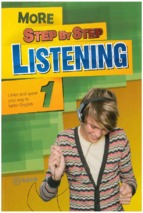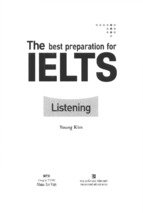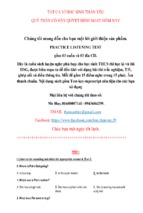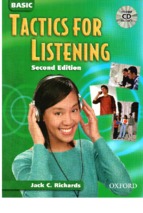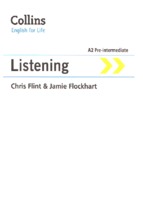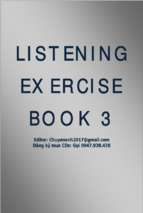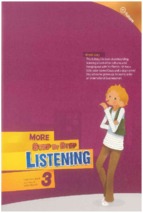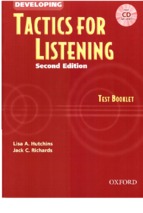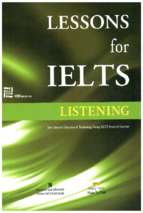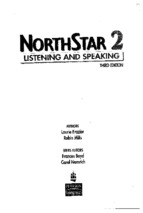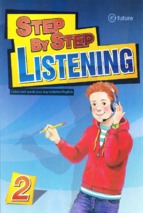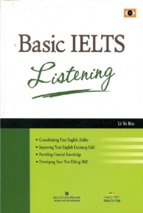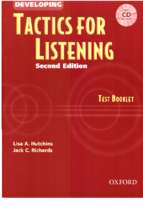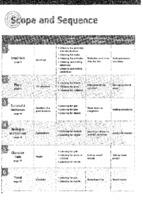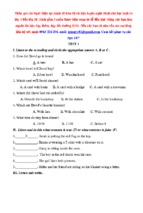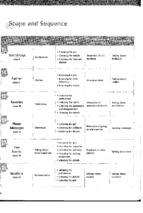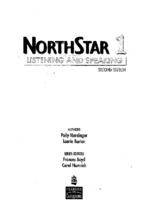HIGHER LESSONS IN ENGLISH.
A WORK ON ENGLISH GRAMMAR AND COMPOSITION,
IN WHICH THE SCIENCE OF THE LANGUAGE IS MADE TRIBUTARY TO THE ART OF
EXPRESSION.
A COURSE OF PRACTICAL LESSONS CAREFULLY GRADED, AND ADAPTED TO EVERY-DAY
USE IN THE SCHOOL-ROOM.
BY
ALONZO REED, A.M.,
FORMERLY INSTRUCTOR IN ENGLISH GRAMMAR IN THE POLYTECHNIC INSTITUTE,
BROOKLYN,
AND
BRAINERD KELLOGG, LL.D.,
PROFESSOR OF THE ENGLISH LANGUAGE AND LITERATURE IN THE POLYTECHNIC
INSTITUTE, BROOKLYN.
Revised Edition, 1896.
Produced by Karl Hagen and the Online Distributed Proofreading Team.
TRANSCRIBER'S NOTES
Underscores mark italics; words enclosed in +pluses+ represent boldface;
Vowels followed by a colon represent a long vowel (printed with a macron in
the original text).
To represent the sentence diagrams in ASCII, the following conventions are
used:
- The heavy horizontal line (for the main clause) is formed with equals
signs (==).
- Other solid vertical lines are formed with minus signs (--).
- Diagonal lines are formed with backslashes (\).
- Words printed on a diagonal line are preceded by a backslash, with no
horizontal line under them.
- Dotted horizontal lines are formed with periods (..)
- Dotted vertical lines are formed with straight apostrophes (')
- Dotted diagonal lines are formed with slanted apostrophes (`)
- Words printed over a horizontally broken line are shown like this:
----, helping
'--------- Words printed bending around a diagonal-horizontal line are broken like
this:
\wai
\
ting
--------END TRANSCRIBER'S NOTES
* * * * * * * * * * * * * * * *
PREFACE.
The plan of "Higher Lessons" will perhaps be better understood if we first
speak of two classes of text-books with which this work is brought into
competition.
+Method of One Class of Text-books+.--In one class are those that aim
chiefly to present a course of technical grammar in the order of
Orthography, Etymology, Syntax, and Prosody. These books give large space
to grammatical Etymology, and demand much memorizing of definitions, rules,
declensions, and conjugations, and much formal word parsing,--work of which
a considerable portion is merely the invention of grammarians, and has
little value in determining the pupil's use of language or in developing
his reasoning faculties. This is a revival of the long-endured, unfruitful,
old-time method.
+Method of Another Class of Text-books.+--In another class are those that
present a miscellaneous collection of lessons in Composition, Spelling,
Pronunciation, Sentence-analysis, Technical Grammar, and General
Information, without unity or continuity. The pupil who completes these
books will have gained something by practice and will have picked up some
scraps of knowledge; but his information will be vague and disconnected,
and he will have missed that mental training which it is the aim of a good
text-book to afford. A text-book is of value just so far as it presents a
clear, logical development of its subject. It must present its science or
its art as a natural growth, otherwise there is no apology for its being.
+The Study of the Sentence for the Proper Use of Words.+--It is the plan of
_this_ book to trace with easy steps the natural development of the
sentence, to consider the leading facts first and then to descend to the
details. To begin with the parts of speech is to begin with details and to
disregard the higher unities, without which the details are scarcely
intelligible. The part of speech to which a word belongs is determined only
by its function in the sentence, and inflections simply mark the offices
and relations of words. Unless the pupil has been systematically trained to
discover the functions and relations of words as elements of an organic
whole, his knowledge of the parts of speech is of little value. It is not
because he cannot conjugate the verb or decline the pronoun that he falls
into such errors as "How many sounds _have_ each of the vowels?" "Five
years' interest _are_ due." "She is older than _me_." He probably would not
say "each _have_," "interest _are_," "_me_ am." One thoroughly familiar
with the structure of the sentence will find little trouble in using
correctly the few inflectional forms in English.
+The Study of the Sentence for the Laws of Discourse.+--Through the study
of the sentence we not only arrive at an intelligent knowledge of the parts
of speech and a correct use of grammatical forms, but we discover the laws
of discourse in general. In the sentence the student should find the law of
unity, of continuity, of proportion, of order. All good writing consists of
good sentences properly joined. Since the sentence is the foundation or
unit of discourse, it is all-important that the pupil should know the
sentence. He should be able to put the principal and the subordinate parts
in their proper relation; he should know the exact function of every
element, its relation to other elements and its relation to the whole. He
should know the sentence as the skillful engineer knows his engine, that,
when there is a disorganization of parts, he may at once find the
difficulty and the remedy for it.
+The Study of the Sentence for the Sake of Translation.+--The laws of
thought being the same for all nations, the logical analysis of the
sentence is the same for all languages. When a student who has acquired a
knowledge of the English sentence comes to the translation of a foreign
language, he finds his work greatly simplified. If in a sentence of his own
language he sees only a mass of unorganized words, how much greater must be
his confusion when this mass of words is in a foreign tongue! A study of
the parts of speech is a far less important preparation for translation,
since the declensions and conjugations in English do not conform to those
of other languages. Teachers of the classics and of modern languages are
beginning to appreciate these facts.
+The Study of the Sentence for Discipline+.--As a means of discipline
nothing can compare with a training in the logical analysis of the
sentence. To study thought through its outward form, the sentence, and to
discover the fitness of the different parts of the expression to the parts
of the thought, is to learn to think. It has been noticed that pupils
thoroughly trained in the analysis and the construction of sentences come
to their other studies with a decided advantage in mental power. These
results can be obtained only by systematic and persistent work. Experienced
teachers understand that a few weak lessons on the sentence at the
beginning of a course and a few at the end can afford little discipline and
little knowledge that will endure, nor can a knowledge of the sentence be
gained by memorizing complicated rules and labored forms of analysis. To
compel a pupil to wade through a page or two of such bewildering terms as
"complex adverbial element of the second class" and "compound prepositional
adjective phrase," in order to comprehend a few simple functions, is
grossly unjust; it is a substitution of form for content, of words for
ideas.
+Subdivisions and Modifications after the Sentence.+--Teachers familiar
with text-books that group all grammatical instruction around the eight
parts of speech, making eight independent units, will not, in the following
lessons, find everything in its accustomed place. But, when it is
remembered that the thread of connection unifying this work is the
sentence, it will be seen that the lessons fall into their natural order of
sequence. When, through the development of the sentence, all the offices of
the different parts of speech are mastered, the most natural thing is to
continue the work of classification and subdivide the parts of speech. The
inflection of words, being distinct from their classification, makes a
separate division of the work. If the chief end of grammar were to enable
one to parse, we should not here depart from long-established precedent.
+Sentences in Groups--Paragraphs+.--In tracing the growth of the sentence
from the simplest to the most complex form, each element, as it is
introduced, is illustrated by a large number of detached sentences, chosen
with the utmost care as to thought and expression. These compel the pupil
to confine his attention to one thing till he gets it well in hand.
Paragraphs from literature are then selected to be used at intervals, with
questions and suggestions to enforce principles already presented, and to
prepare the way informally for the regular lessons that follow. The lessons
on these selections are, however, made to take a much wider scope. They
lead the pupil to discover how and why sentences are grouped into
paragraphs, and how paragraphs are related to each other; they also lead
him on to discover whatever is most worthy of imitation in the style of the
several models presented.
+The Use of the Diagram+.--In written analysis, the simple map, or diagram,
found in the following lessons, will enable the pupil to present directly
and vividly to the eye the exact function of every clause in the sentence,
of every phrase in the clause, and of every word in the phrase--to picture
the complete analysis of the sentence, with principal and subordinate parts
in their proper relations. It is only by the aid of such a map, or picture,
that the pupil can, at a single view, see the sentence as an organic whole
made up of many parts performing various functions and standing in various
relations. Without such map he must labor under the disadvantage of seeing
all these things by piecemeal or in succession.
But if for any reason the teacher prefers not to use these diagrams, they
may be omitted without causing the slightest break in the work. The plan of
this book is in no way dependent on the use of the diagrams.
+The Objections to the Diagram+.--The fact that the pictorial diagram
groups the parts of a sentence according to their offices and relations,
and not in the order of speech, has been spoken of as a fault. It is, on
the contrary, a merit, for it teaches the pupil to look through the
literary order and discover the logical order. He thus learns what the
literary order really is, and sees that this may be varied indefinitely, so
long as the logical relations are kept clear.
The assertion that correct diagrams can be made mechanically is not borne
out by the facts. It is easier to avoid precision in oral analysis than in
written. The diagram drives the pupil to a most searching examination of
the sentence, brings him face to face with every difficulty, and compels a
decision on every point.
+The Abuse of the Diagram+.--Analysis by diagram often becomes so
interesting and so helpful that, like other good things, it is liable to be
overdone. There is danger of requiring too much written analysis. When the
ordinary constructions have been made clear, diagrams should be used only
for the more difficult sentences, or, if the sentences are long, only for
the more difficult parts of them. In both oral and written analysis there
is danger of repeating what needs no repetition. When the diagram has
served its purpose, it should be dropped.
AUTHORS' NOTE TO REVISED EDITION.
During the years in which "Higher Lessons" has been in existence, we have
ourselves had an instructive experience with it in the classroom. We have
considered hundreds of suggestive letters written us by intelligent
teachers using the book. We have examined the best works on grammar that
have been published recently here and in England. And we have done more. We
have gone to the original source of all valid authority in our language-the best writers and speakers of it. That we might ascertain what present
linguistic usage is, we chose fifty authors, now alive or living till
recently, and have carefully read three hundred pages of each. We have
minutely noted and recorded what these men by habitual use declare to be
good English. Among the fifty are such men as Ruskin, Froude, Hamerton,
Matthew Arnold, Macaulay, De Quincey, Thackeray, Bagehot, John Morley,
James Martineau, Cardinal Newman, J. R. Green, and Lecky in England; and
Hawthorne, Curtis, Prof. W. D. Whitney, George P. Marsh, Prescott, Emerson,
Motley, Prof. Austin Phelps, Holmes, Edward Everett, Irving, and Lowell in
America. When in the pages following we anywhere quote usage, it is to the
authority of such men that we appeal.
Upon these four sources of help we have drawn in the Revision of "Higher
Lessons" that we now offer to the public.
In this revised work we have given additional reasons for the opinions we
hold, and have advanced to some new positions; have explained more fully
what some teachers have thought obscure; have qualified what we think was
put too positively in former editions; have given the history of
constructions where this would deepen interest or aid in composition; have
quoted the verdicts of usage on many locutions condemned by purists; have
tried to work into the pupil's style the felicities of expression found in
the lesson sentences; have taught the pupil earlier in the work, and more
thoroughly, the structure and the function of paragraphs; and have led him
on from the composition of single sentences of all kinds to the composition
of these great groups of sentences. But the distinctive features of "Higher
Lessons" that have made the work so useful and so popular stand as they
have stood--the Study of Words from their Offices in the Sentence, Analysis
for the sake of subsequent Synthesis, Easy Gradation, the Subdivisions and
Modifications of the Parts of Speech after the treatment of these in the
Sentence, etc., etc. We confess to some surprise that so little of what was
thought good in matter and method years ago has been seriously affected by
criticism since.
The additions made to "Higher Lessons"--additions that bring the work up to
the latest requirements--are generally in foot-notes to pages, and
sometimes are incorporated into the body of the Lessons, which in number
and numbering remain as they were. The books of former editions and those
of this revised edition can, therefore, be used in the same class without
any inconvenience.
Of the teachers who have given us invaluable assistance in this Revision,
we wish specially to name Prof. Henry M. Worrell, of the Polytechnic
Institute; and in this edition of the work, as in the preceding, we take
pleasure in acknowledging our great indebtedness to our critic, the
distinguished Prof. Francis A. March, of Lafayette College.
*
*
*
*
*
LESSON 1.
A TALK ON LANGUAGE.
Let us talk to-day about a language that we never learn from a grammar or
from a book of any kind--a language that we come by naturally, and use
without thinking of it.
It is a universal language, and consequently needs no interpreter. People
of all lands and of all degrees of culture use it; even the brute animals
in some measure understand it.
This Natural language is the language of cries, laughter, and tones, the
language of the eyes, the nose, the mouth, the whole face; the language of
gestures and postures.
The child's cry tells of its wants; its sob, of grief; its scream, of pain;
its laugh, of delight. The boy raises his eyebrows in surprise and his nose
in disgust, leans forward in expectation, draws back in fear, makes a fist
in anger, and calls or drives away his dog simply by the tone in which he
speaks.
But feelings and desires are not the only things we wish to communicate.
Early in life we begin to acquire knowledge and learn to think, and then we
feel the need of a better language.
Suppose, for instance, you have formed an idea of a day; could you express
this by a tone, a look, or a gesture?
If you wish to tell me the fact that _yesterday was cloudy_, or that _the
days are shorter in winter than in summer_, you find it wholly impossible
to do this by means of Natural language.
To communicate, then, your thoughts, or even the mental pictures we have
called ideas, you need a language more nearly perfect.
This language is made up of words.
These words you learn from your mothers, and so Word language is your
mother-tongue. You learn them, also, from your friends and teachers, your
playmates and companions, and you learn them by reading; for words, as you
know, may be written as well as spoken.
This Word language we may, from its superiority, call +Language Proper+.
Natural language, as was said, precedes this Word language, but gives way
as Word language comes in and takes its place; yet Natural language may be
used, and always should be used, to assist and strengthen Word language. In
earnest conversation we enforce what we say in words, by the tone in which
we utter them, by the varying expression of the face, and by the movements
of the different parts of the body.
The look or the gesture may even dart ahead of the word, or it may
contradict it, and thus convict the speaker of ignorance or deception.
The happy union of the two kinds of language is the charm of all good
reading and speaking. The teacher of elocution is ever trying to recall the
pupil to the tones, the facial expression, and the action, so natural to
him in childhood and in animated conversation.
+DEFINITION.--_Language Proper_ consists of the spoken and the written
words used to communicate ideas and thoughts+.
+DEFINITION.--_English Grammar_ is the science which teaches the forms,
uses, and relations of the words of the English language.+
*
*
*
*
*
LESSON 2.
A TALK ON THOUGHTS AND SENTENCES.
To express a thought we use more than a single word, and the words arranged
to express a thought we call a sentence.
But there was a time when, through lack of words, we compressed our thought
into a single word. The child says to his father, _up_, meaning, _Take me
up into your lap_; or, _book_, meaning, _This thing in my hand is a book_.
These first words always deal with the things that can be learned by the
senses; they express the child's ideas of these things.
We have spoken of thoughts and sentences; let us see now whether we can
find out what a thought is, and what a sentence is.
A sentence is a group of words expressing a thought; it is a body of which
a thought is the soul. It is something that can be seen or heard, while a
thought cannot be. Let us see whether, in studying a sentence, we may not
learn what a thought is.
In any such sentence as this, _Spiders spin_, something is said, or
asserted, about something. Here it is said, or asserted, of the animals,
spiders, that they spin.
The sentence, then, consists of two parts,--the name of that of which
something is said, and that which is said of it.
The first of these parts we call the +Subject+ of the sentence; the second,
the +Predicate+.
Now, if the sentence, composed of two parts, expresses the thought, there
must be in the thought two parts to be expressed. And there are two: viz.,
something of which we think, and that which we think of it. In the thought
expressed by _Spiders spin_, the animals, spiders, are the something of
which we think, and their spinning is what we think of them. In the
sentence expressing this thought, the word _spiders_ names that of which we
think, and the word _spin_ tells what we think of spiders.
Not every group of words is necessarily a sentence, because it may not be
the expression of a thought. _Spiders spinning_ is not a sentence. There is
nothing in this expression to show that we have formed a judgment, _i.e._,
that we have really made up our minds that spiders do spin. The spinning is
not asserted of the spiders.
_Soft feathers_, _The shining sun_ are not sentences, and for similar
reasons. _Feathers are soft_, _The sun shines_ are sentences. Here the
asserting word is supplied, and something is said of something else.
_The shines sun_ is not a sentence; for, though it contains the asserting
word _shines_, the arrangement is such that no assertion is made, and no
thought is expressed.
*
*
*
*
*
LESSON 3.
A TALK ON SOUNDS AND LETTERS.
We have already told you that in expressing our ideas and thoughts we use
two kinds of words, spoken words and written words.
We learned the spoken words first. Mankind spoke long before they wrote.
Not until people wished to communicate with those at a distance, or had
thought out something worth handing down to aftertimes, did they need to
write.
But speaking was easy. The air, the lungs, and the organs of the throat and
mouth were at hand. The first cry was a suggestion. Sounds and noises were
heard on every side, provoking imitation, and the need of speech for the
purposes of communication was imperative.
Spoken words are made up of sounds. There are over forty sounds in the
English language. The different combinations of these give us all the words
of our spoken tongue. That you may clearly understand these sounds, we will
tell you something about the human voice.
In talking, the air driven out from your lungs beats against two flat
muscles, stretched, like bands, across the top of the windpipe, and causes
them to vibrate up and down. This vibration makes sound. Take a thread, put
one end between your teeth, hold the other with thumb and finger, draw it
tight and strike it, and you will understand how voice is made. The shorter
the string, or the tighter it is drawn, the faster will it vibrate, and the
higher will be the pitch of the sound. The more violent the blow, the
farther will the string vibrate, and the louder will be the sound. Just so
with these vocal bands or cords. The varying force with which the breath
strikes them and their different tensions and lengths at different times,
explain the different degrees of loudness and the varying pitch of the
voice.
If the voice thus produced comes out through the mouth held well open, a
class of sounds is formed which we call vowel sounds.
But if the voice is held back or obstructed by the palate, tongue, teeth,
or lips, one kind of the sounds called consonant sounds is made. If the
breath is driven out without voice, and is held back by these same parts of
the mouth, the other kind of consonant sounds is formed.
The written word is made up of characters, or letters, which represent to
the eye these sounds that address the ear.
You are now prepared to understand us when we say that +vowels+ are the
+letters+ that stand for the +open sounds+ of the +voice+, and that
+consonants+ are the +letters+ that stand for the sounds made by the
+obstructed voice+ and the +obstructed breath+.
The alphabet of a language is a complete list of its letters. A perfect
alphabet would have one letter for each sound, and only one.
Our alphabet is imperfect in at least these three ways:-1. Some of the letters are superfluous; _c_ stands for the sound of _s_ or
of _k_, as in _city_ and _can_; _q_ has the sound of _k_, as in _quit_; and
_x_ that of _ks_, _gz_, or _z_, as in _expel_, _exist_, and _Xenophon_.
2. Combinations of letters sometimes represent single sounds; as, _th_ in
thine, _th_ in _thin_, _ng_ in _sing_, and _sh_ in _shut_.
3. Some letters stand each for many sounds. Twenty-three letters represent
over forty sounds. Every vowel does more than single duty; _e_ stands for
two sounds, as in _mete_ and _met_; _i_ for two, as in _pine_ and _pin_;
_o_ for three, as in _note, not_, and _move_; _u_ for four, as in _tube,
tub, full_, and _fur_; _a_ for six, as in _fate, fat, far, fall, fast_, and
_fare_.
_W_ is a vowel when it unites with a preceding vowel to represent a vowel
sound, and _y_ is a vowel when it has the sound of _i_, as in _now, by,
boy, newly_. _W_ and _y_ are consonants at the beginning of a word or
syllable.
The various sounds of the several vowels and even of the same vowel are
caused by the different shapes which the mouth assumes. These changes in
its cavity produce, also, the two sounds that unite in each of the
compounds, _ou_, _oi_, _ew_, and in the alphabetic _i_ and _o_.
1.
2.
_Vocal Consonants_. _Aspirates_.
b..................p
d..................t
g..................k
-------------------h
j..................ch
l-----------------m-----------------n-----------------r-----------------th.................th
(in _thine_)
(in _thin_)
v..................f
w-----------------y-----------------z (in _zone_)......s
z (in _azure_).....sh
The consonants in column 1 represent the sounds made by the obstructed
voice; those in column 2, except _h_ (which represents a mere forcible
breathing), represent those made by the obstructed breath.
The letters are mostly in pairs. Now note that the tongue, teeth, lips, and
palate are placed in the same relative position to make the sounds of both
letters in any pair. The difference in the sounds of the letters of any
pair is simply this: there is voice in the sounds of the letters in column
1, and only whisper in those of column 2. Give the sound of any letter in
column 1, as _b, g, v_, and the last or vanishing part of it is the sound
of the other letter of the pair.
TO THE TEACHER.--Write these letters on the board, as above, and drill the
pupils on the sounds till they can see and make these distinctions. Drill
them on the vowels also.
In closing this talk with you, we wish to emphasize one point brought
before you. Here is a pencil, a real thing; we carry in memory a picture of
the pencil, which we call an idea; and there are the two words naming this
idea, the spoken and the written. Learn to distinguish clearly these four
things.
TO THE TEACHER.--In reviewing these three Lessons, put particular emphasis
on Lesson 2.
*
*
*
*
*
LESSON 4.
ANALYSIS AND THE DIAGRAM.
TO THE TEACHER.--If the pupils have been through "Graded Lessons" or its
equivalent, some of the following Lessons may be passed over rapidly.
+DEFINITION.--A _Sentence_ is the expression of a thought in words+.
+Direction+.--_Analyze the following sentences_:-+Model+.--_Spiders spin_. Why is this a sentence? Ans.--Because it
expresses a thought. Of what is something thought? Ans.--Spiders. Which
word tells what is thought? Ans.--_Spin_. [Footnote: The word _spiders_,
standing in Roman, names our idea of the real thing; _spin_, used merely as
a word, is in Italics. This use of Italics the teacher and the pupil will
please note here and elsewhere.]
1.
2.
3.
4.
5.
6.
7.
8.
9.
Tides ebb.
Liquids flow.
Steam expands.
Carbon burns.
Iron melts.
Powder explodes.
Leaves tremble.
Worms crawl.
Hares leap.
In each of these sentences there are, as you have learned, two parts--the
+Subject+ and the +Predicate+.
+DEFINITION.--The _Subject of a sentence_ names that of which something is
thought.+
+DEFINITION.--The _Predicate of a sentence_ tells what is thought.+
+DEFINITION.--The _Analysis of a sentence_ is the separation of it into its
parts.+
+Direction+.--_Analyze these sentences_:-+Model+.--_Beavers build_. This is a sentence because it expresses a
thought. _Beavers_ is the subject because it names that of which something
is thought; _build_ is the predicate because it tells what is thought.
[Footnote: When pupils are familiar with the definitions, let the form of
analysis be varied. The reasons may be made more specific. Here and
elsewhere avoid mechanical repetition.]
1.
2.
3.
4.
5.
6.
7.
8.
9.
Squirrels climb.
Blood circulates.
Muscles tire.
Heralds proclaim.
Apes chatter.
Branches wave.
Corn ripens.
Birds twitter.
Hearts throb.
+Explanation+.--Draw a heavy line and divide it into two parts. Let the
first part represent the subject of a sentence; the second, the predicate.
If you write a word over the first part, you will understand that this word
is the subject of a sentence. If you write a word over the second part, you
will understand that this word is the predicate of a sentence.
Love | conquers
========|============
|
You see, by looking at this figure, that _Love conquers_ is a sentence;
that _love_ is the subject, and _conquers_ the predicate.
Such figures, made up of straight lines, we call _Diagrams_.
+DEFINITION.--A _Diagram_ is a picture of the offices and the relations of
the different parts of a sentence.+
+Direction+.--_Analyze these sentences_:-1. Frogs croak.
2. Hens sit.
3. Sheep bleat.
4. Cows low.
5. Flies buzz.
6. Sap ascends.
7. Study pays.
8. Buds swell.
9. Books aid.
10. Noise disturbs.
11. Hope strengthens.
12. Cocks crow.
*
*
*
*
*
LESSON 5.
COMPOSITION--SUBJECT AND PREDICATE.
+CAPITAL LETTER--RULE.--The first word of every sentence must begin with a
_capital letter_+.
+PERIOD--RULE.--A _period_ must be placed after every sentence that simply
affirms, denies, or commands.+
+Direction+.--_Construct sentences by supplying a subject to each of the
following predicates_:-Ask yourselves the questions, What tarnishes? Who sailed, conquered, etc.?
1. ----- tarnishes.
2. ----- capsize.
3. ----- radiates.
4. ----- sentence.
5. ----- careen.
6. ----- sailed.
7. ----- descends.
8. ----- glisten.
9. ----- absorb.
10. ----- corrode.
11. ----- conquered.
12. ----- surrendered.
13. ----- refines.
14. ----- gurgle.
15. ----- murmur.
+Direction+.--_Construct sentences by supplying a predicate to each of the
following subjects_:-Ask yourselves the question, Glycerine does what?
1. Glycerine -----.
2. Yankees -----.
3. Tyrants -----.
4. Pendulums -----.
5. Caesar -----.
6. Labor -----.
7. Chalk -----.
8. Nature -----.
9. Tempests -----.
10. Seeds -----.
11. Heat -----.
12. Philosophers -----.
13. Bubbles -----.
14. Darkness -----.
15. Wax -----.
16. Reptiles -----.
17. Merchants -----.
18. Meteors -----.
19. Conscience -----.
20. Congress -----.
21. Life -----.
22. Vapors -----.
23. Music -----.
24. Pitch -----.
TO THE TEACHER.--This exercise may profitably be extended by supplying
several subjects to each predicate, and several predicates to each subject.
*
*
*
*
*
LESSON 6.
ANALYSIS.
The predicate sometimes contains more than one word.
+Direction+.--_Analyze as in Lesson 4_.
1.
2.
3.
4.
5.
6.
Moisture is exhaled.
Conclusions are drawn.
Industry will enrich.
Stars have disappeared.
Twilight is falling.
Leaves are turning.
7. Sirius has appeared.
8. Constantinople had been captured.
9. Electricity has been harnessed.
10. Tempests have been raging.
11. Nuisances should be abated.
12. Jerusalem was destroyed.
13. Light can be reflected.
14. Rain must have fallen.
15. Planets have been discovered.
16. Palaces shall crumble.
17. Storms may be gathering.
18. Essex might have been saved.
19. Caesar could have been crowned,
20. Inventors may be encouraged.
+Direction+.--_Point out the subject and the predicate of each sentence in
Lessons 12 and 17_.
Look first for the word that asserts, and then, by putting _who_ or _what_
before this predicate, the subject may easily be found.
TO THE TEACHER.--Let this exercise be continued till the pupils can readily
point out the subject and the predicate in ordinary simple sentences.
When this can be done promptly, the first and most important step in
analysis will have been taken.
*
*
*
*
*
LESSON 7.
COMPOSITION--SUBJECT AND PREDICATE.
+Direction+.--_Make at least ten good sentences out of the words in the
three columns following_:-The helping words in column 2 must be prefixed to words in column 3 in
order to make complete predicates. Analyze your sentences.
1
Arts
Allen
Life
Theories
Science
Truth
Shadows
Moscow
Raleigh
Quantity
2
is
was
are
will
would
were
may be
has been
have been
should have been
3
progressing.
tested.
command.
prolonged.
released.
falling.
burned.
measured.
prevail.
lost.
Review Questions.
What is language proper? What is English grammar? What is a sentence? What
are its two parts? What is the subject of a sentence? The predicate of a
sentence? The analysis of a sentence? What is a diagram? What rule has been
given for the use of capital letters? For the period? May the predicate
contain more than one word? Illustrate.
TO THE TEACHER.--Introduce the class to the Parts of Speech before the
close of this recitation. See "Introductory Hints" below.
*
*
*
*
*
LESSON 8.
CLASSES OF WORDS.
NOUNS.
+Introductory Hints+.--We have now reached the point where we must classify
the words of our language. But we are appalled by their number. If we must
learn all about the forms and the uses of a hundred thousand words by
studying these words one by one, we shall die ignorant of English grammar.
But may we not deal with words as we do with plants? If we had to study and
name each leaf and stem and flower, taken singly, we should never master
the botany even of our garden-plants.
But God has made things to resemble one another and to differ from one
another; and, as he has given us the power to detect resemblances and
differences, we are able to group things that have like qualities.
From certain likenesses in form and in structure, we put certain flowers
together and call them roses; from other likenesses, we get another class
called lilies; from others still, violets. Just so we classify trees and
get the oak, the elm, the maple, etc.
The myriad objects of nature fall into comparatively few classes. Studying
each class, we learn all we need to know of every object in it.
From their likenesses, though not in form, we classify words. We group them
according to their similarities in use, or office, in the sentence. Sorting
them thus, we find that they all fall into eight classes, which we call
Parts of Speech.
We find that many words name things--are the names of things of which we
can think and speak. These we place in one class and call them +Nouns+
(Latin _nomen_, a name, a noun).
PRONOUNS.
Without the little words which we shall italicize, it would be difficult
for one stranger to ask another, "Can _you_ tell _me who_ is the postmaster
at B?" The one would not know what name to use instead of _you_, the other
would not recognize the name in the place of _me_, and both would be
puzzled to find a substitute for _who_.
_I, you, my, me, what, we, it, he, who, him, she, them,_ and other words
are used in place of nouns, and are, therefore, called +Pronouns+ (Lat.
_pro_, for, and _nomen_, a noun).
By means of these handy little words we can represent any or every object
in existence. We could hardly speak or write without them now, they so
frequently shorten the expression and prevent confusion and repetition.
+DEFINITION.--A _Noun_ is the name of anything.+
+DEFINITION.--A _Pronoun_ is a word used for a noun.+
The principal office of nouns is to name the things of which we say, or
assert, something in the sentence.
+Direction+.---_Write, according to the model, the names of things that can
burn, grow, melt, love, roar, or revolve._
+Model.+--
_Nouns._
Wood
|
Paper
Oil
Houses
Coal
Leaves
Matches
Clothes
|
|
+
|
|
|
|
burn or burns.
+Remark.+--Notice that, when the subject adds _s_ or _es_ to denote more
than one, the predicate does not take _s_. Note how it would sound if both
should add _s_.
+Every subject+ of a sentence is a +noun+, or some word or words used as a
noun. But not every noun in a sentence is a subject.
+Direction.+--_Select and write all the nouns and pronouns, whether
subjects or not, in the sentences given in Lesson_ 18.
_In writing them observe the following rules_:-+CAPITAL LETTER--RULE.--_Proper,_ or _individual, names_ and _words derived
from them_ begin with capital letters.+
+PERIOD and CAPITAL LETTER--RULE.--_Abbreviations_ generally begin with
capital letters and are always followed by the period.+
*
*
*
*
*
LESSON 9.
CAPITAL LETTERS.
+Direction.+--_From the following words select and write in one column
those names that distinguish individual things from others of the same
class, and in another column those words that are derived from individual
names_:-Observe Rule 1, Lesson 8.
ohio, state, chicago, france, bostonian, country, england, boston, milton,
river, girl, mary, hudson, william, britain, miltonic, city, englishman,
messiah, platonic, american, deity, bible, book, plato, christian,
broadway, america, jehovah, british, easter, europe, man, scriptures, god.
+Direction.+--_Write the names of the days of the week and the months of
the year, beginning each with a capital letter; and write the names of the
seasons without capital letters._
+Remember+ that, when a class name and a distinguishing word combine to
make one individual name, each word begins with a capital letter; as,
_Jersey City_. [Footnote: _Dead Sea_ is composed of the class name _sea_,
which applies to all seas, and the word _Dead_, which distinguishes one sea
from all others.]
But, when the distinguishing word can by itself be regarded as a complete
name, the class name begins with a small letter; as, _river Rhine_.
+Examples+.--Long Island, Good Friday, Mount Vernon, Suspension Bridge, New
York city, Harper's Ferry, Cape May, Bunker Hill, Red River, Lake Erie,
General Jackson, White Mountains, river Thames, Astor House, steamer Drew,
North Pole.
+Direction+.--_Write these words, using capital letters when needed_:--
ohio river, professor huxley, president adams, doctor brown, clinton
county, westchester county, colonel burr, secretary stanton, lake george,
green mountains, white sea, cape cod, delaware bay, atlantic ocean, united
states, rhode island.
+Remember+ that, when an individual name is made up of a class name, the
word _of_, and a distinguishing word, the class name and the distinguishing
word should each begin with a capital letter; as, _Gulf of Mexico_. But,
when the distinguishing word can by itself be regarded as a complete name,
the class name should begin with a small letter; as, _city of London_.
[Footnote: The need of some definite instruction to save the young writer
from hesitation and confusion in the use of capitals is evident from the
following variety of forms now in use: _City_ of New York, _city_ of New
York, New York _City_, New York _city_, New York _State_, New York _state_,
Fourth _Avenue_, Fourth _avenue_, Grand _Street_, Grand _street_, Grand
_st._, Atlantic _Ocean_, Atlantic _ocean_, Mediterranean _Sea_,
Mediterranean _sea_, Kings _County_, Kings _county_, etc.
The usage of newspapers and of text-books on geography would probably favor
the writing of the class names in the examples above with initial capitals;
but we find in the most carefully printed books and periodicals a tendency
to favor small letters in such cases.
In the superscription of letters, such words as _street_, _city_, and
_county_ begin with capitals.
Usage certainly favors small initials for the following italicized words:
_river_ Rhine, Catskill _village_, the Ohio and Mississippi _rivers_. If
_river_ and _village_, in the preceding examples, are not essential parts
of the individual names, why should _river_, _ocean_, and _county_, in
Hudson _river_, Pacific _ocean_, Queens _county_, be treated differently?
We often say the _Hudson_, the _Pacific_, _Queens_, without adding the
explanatory class name.
The principle we suggest may be in advance of common usage; but it is in
the line of progress, and it tends to uniformity of practice and to an
improved appearance of the page. About a century ago every noun began with
a capital letter.
The American Cyclopedia takes a position still further in advance, as
illustrated in the following: Bed _river_, Black _sea_, _gulf_ of Mexico,
Rocky _mountains_. In the Encyclopaedia Britannica (Little, Brown, & Co.,
9th ed.) we find Connecticut _river_, Madison _county_, etc., quite
uniformly; but we find _Gulf_ of Mexico, Pacific _Ocean_, etc.]
+Direction+.--_Write these words, using capital letters when needed:_-city of atlanta, isle of man, straits of dover, state of Vermont, isthmus
of darien, sea of galilee, queen of england, bay of naples, empire of
china.
+Remember+ that, when a compound name is made up of two or more
distinguishing words, as, Henry Clay, John Stuart Mill, each word begins
with a capital letter.
+Direction+.--_Write these words, using capital letters when needed_:-great britain, lower california, south carolina, daniel webster, new
england, oliver wendell holmes, north america, new orleans, james russell
lowell, british america.
+Remember+ that, in writing the titles of books, essays, poems, plays,
etc., and the names of the Deity, only the chief words begin with capital
letters; as, Decline and Fall of the Roman Empire, Supreme Being, Paradise
Lost, the Holy One of Israel.
+Direction+.--_Write these words, using capital letters when needed_:-declaration of independence, clarendon's history of the great rebellion,
webster's reply to hayne, pilgrim's progress, johnson's lives of the poets,
son of man, the most high, dombey and son, tent on the beach, bancroft's
history of the united states.
+Direction+.--_Write these miscellaneous names, using capital letters when
needed_:-erie canal, governor tilden, napoleon bonaparte, cape of good hope, pope's
essay on criticism, massachusetts bay, city of boston, continent of
america, new testament, goldsmith's she stoops to conquer, milton's hymn on
the nativity, indian ocean, cape cod bay, plymouth rock, anderson's history
of the united states, mount washington, english channel, the holy spirit,
new york central railroad, old world, long island sound, flatbush village.
*
*
*
*
*
LESSON 10.
ABBREVIATIONS.
+Direction+.--_Some words occur frequently, and for convenience may he
abbreviated in writing. Observing Rule 2, Lesson 8, abbreviate these words
by writing the first five letters_:-Thursday and lieutenant.
_These by writing the first four letters_:-Connecticut, captain, Colorado, Kansas, Massachusetts, Michigan, Minnesota,
Mississippi, Nebraska, Oregon, professor, president, Tennessee, and
Tuesday.
_These by writing the first three letters_:-Alabama, answer, Arkansas, California, colonel, Delaware, England, esquire,
Friday, general, George, governor, honorable, Illinois, Indiana, major,
Monday, Nevada, reverend, Saturday, secretary, Sunday, Texas, Wednesday,
Wisconsin, and the names of the months except May, June, and July.
_These by writing the first two letters_:-Company, county, credit, example, and idem (the same).
_These by writing the first letter_:-East, north, south, and west. [Footnote: When these words refer to sections
of the country, they should begin with capitals.]
_These by writing the first and the last letter_:-Doctor, debtor, Georgia, junior, Kentucky, Louisiana, Maine, Maryland,
Master, Mister, numero (number), Pennsylvania, saint, street, Vermont, and
Virginia.
_These by writing the first letter of each word of the compound with a
period after each letter_:-Artium baccalaureus (bachelor of arts), anno Domini (in the year of our
Lord), artium magister (master of arts), ante meridiem (before noon),
before Christ, collect on delivery, District (of) Columbia, divinitatis
doctor (doctor of divinity), member (of) Congress, medicinae doctor (doctor
of medicine), member (of) Parliament, North America, North Carolina, New
Hampshire, New Jersey, New York, postmaster, post meridiem (afternoon),
post-office, Rhode Island, South Carolina, and United States.
+Direction.+--_The following abbreviations and those you have made should
be committed to memory_:-Acct. _or_ acct., account.
Bbl. _or_ bbl., barrel.
Chas., Charles.
Fla., Florida.
LL. D., legum doctor (doctor of laws).[Footnote: The doubling of the
_l_ to _ll_ and in _LL. D.,_ and of _p_ in _pp.,_
with no period between the letters, comes from pluralizing the nouns
_line, lean_, and _page_.]
Messrs., messieurs (gentlemen).
Mme., madame.
Mo., Missouri.
Mrs., (pronounced missis) mistress.
Mts., mountains.
Ph.D., philosophiae doctor (doctor of philosophy).
Recd., received.
Robt., Robert.
Supt., superintendent.
Thos., Thomas.
bu., bushel.
do., ditto (the same)
doz., dozen.
e.g., exempli gratia (for example)
etc., et caetera (and others).
ft., foot, feet.
hhd., hogshead.
hdkf., handkerchief.
i.e., id est (that is).
l., line.
ll., lines.
lb., libra (pound).
oz., ounce.
p., page.
pp., pages.
qt., quart.
vs., versus (against).
viz., videlicet (namely).
yd., yard.
+Remark.+--In this Lesson we have given the abbreviations of the states as
now regulated by the "U. S. Official Postal Guide." In the "Guide" _Iowa_
and _Ohio_ are not abbreviated. They are, however, frequently abbreviated
thus: _Iowa, Ia._ or _Io.; Ohio, 0._
The similarity, when hurriedly written, of the abbreviations _Cal., Col.;
Ia., Io.; Neb., Nev.; Penn., Tenn.,_ etc., has led to much confusion.
*
*
*
*
*
LESSON 11.
VERBS.
+Introductory Hints+.--We told you in Lesson 8 how, by noticing the
essential likenesses in things and grouping the things thus alike, we could
throw the countless objects around us into comparatively few classes.
We began to classify words according to their use, or office, in the
sentence; we found one class of words that name things, and we called them
_nouns_.
But in all the sentences given you, we have had to use another class of
words. These words, you notice, tell what the things do, or assert that
they are, or exist.
When we say _Clocks tick_, _tick_ is not the name of anything; it tells
what clocks do: it asserts action.
When we say _Clocks are_, or _There are clocks_, _are_ is not the name of.
anything, nor does it tell what clocks do; it simply asserts existence, or
being.
When we say _Clocks hang, stand, last, lie_, or _remain_, these words
_hang, stand, last_, etc., do not name anything, nor do they tell that
clocks act or simply exist; they tell the condition, or state, in which
clocks are, or exist; that is, they assert state of being.
All words that assert action, being, or state of being, we call +Verbs+
(+Lat+. _verbum_, a word). The name was given to this class because it was
thought that they were the most important words in the sentence.
Give several verbs that assert action. Give some that assert being, and
some that assert state of being.
+DEFINITION+.--+A _Verb_ is a word that asserts action, being-, or state of
being+.
There are, however, two forms of the verb, the participle and the
infinitive (see Lessons 37 and 40), that express action, being, or state of
being, without asserting it.
+Direction.+--_Write after each of the following nouns as many appropriate
verbs as you can think of_:-Let some express being and some express state of being.
+Model.--_Noun._
Fire
(or)
Fires
|
|
|
|
+
|
|
|
|
burns.
melt.
scorches.
keep.
spreads.
glow.
rages.
heat.
exists.
+Remark.+--Notice that the simple form of the verb, as, _burn, melt,
scorch_, adds _s_ or _es_ when its subject noun names but one thing.
Lawyers, mills, horses, books, education, birds, mind.
A verb may consist of two, three, or even four words; as, _is learning, may
be learned, could have been learned_. [Footnote: Such groups of words are
sometimes called _verb-phrases_. For definition of _phrase_, see Lesson
17.]
+Direction.+--_Unite the words in columns_ 2 _and_ 3 _below, and append the
verbs thus formed to the nouns and pronouns in column_ 1 _so as to make
good sentences_:--
+Remark.+--Notice that _is, was_, and _has_ are used with nouns naming one
thing, and with the pronouns _he, she_, and _it_; and that _are, were_, and
_have_ are used with nouns naming more than one thing, and with the
pronouns _we, you_, and _they_. _I_ may be used with _am, was_, and _have_.
1
Words
Cotton
Sugar
Air
Teas
Speeches
I, we, you
He, she, it, they
2
am
is
are
3
confused.
exported.
refined.
coined.
delivered.
weighed.
imported.
transferred.
was
were
has been
have been
As verbs are the only words that assert, +every predicate+ must be a verb,
or must contain a verb.
+Naming the class+ to which a word belongs is the +first step in parsing.+
+Direction+.--_Parse five of the sentences you have written_.
+Model+.--_Poland was dismembered_.
+Parsing+.--_Poland_ is a noun because ----; _was dismembered_ is a verb
because it asserts action.
*
*
*
*
*
LESSON 12.
MODIFIED SUBJECT.
ADJECTIVES.
+Introductory Hints+.--The subject noun and the predicate verb are not
always or often the whole of the structure that we call the sentence,
though they are the underlying timbers that support the rest of the verbal
bridge. Other words may be built upon them.
We learned in Lesson 8 that things resemble one another and differ from one
another. They resemble and they differ in what we call their qualities.
Things are alike whose qualities are the same, as, two oranges having the
same color, taste, and odor. Things are unlike, as an orange and an apple,
whose qualities are different.
It is by their qualities, then, that we know things and group them.
_Ripe apples are healthful. Unripe apples are hurtful._ In these two
sentences we have the same word apples to name the same general class of
things; but the prefixed words ripe and unripe, marking opposite qualities
in the apples, separate the apples into two kinds--the ripe ones and the
unripe ones.
These prefixed words _ripe_ and _unripe_, then, limit the word _apples_ in
its scope; _ripe apples_ or _unripe apples_ applies to fewer things than
_apples_ alone applies to.
If we say _the, this, that_ apple, or _an, no_ apple, or _some, many,
eight_ apples, we do not mark any quality of the fruit; but _the, this,_ or
_that_ points out a particular apple, and limits the word _apple_ to the
one pointed out; and _an, no, some, many_, or _eight_ limits the word in
respect to the number of apples that it denotes.
These and all such words as by marking quality, by pointing out, or by
specifying number or quantity limit the scope or add to the meaning of the
noun, +modify+ it, and are called +Modifiers+.
In the sentence above, _apples_ is the +Simple Subject+ and _ripe apples_
is the +Modified Subject+.
Words that modify nouns and pronouns are called +Adjectives+ (Lat. _ad_,
to, and _jacere_, to throw).
+DEFINITION.--A _Modifier_ is a word or a group of words joined to some
part of the sentence to qualify or limit the meaning+.
The +Subject+ with its +Modifiers+ is called the +Modified Subject+, or
_Logical Subject_.
+DEFINITION.--An _Adjective_ is a word used to modify a noun or a pronoun+.
Analysis and Parsing.
1. The cold November rain is falling.
rain
| is falling
=========================|==============
\The \cold \November |
+Explanation.+--The two lines shaded alike and placed uppermost stand for
the subject and the predicate, and show that these are of the same rank,
and are the principal parts of the sentence. The lighter lines, placed
under and joined to the subject line, stand for the less important parts,
the modifiers, and show what is modified. [Footnote: TO THE TEACHER.--When
several adjectives are joined to one noun, each adjective does not always
modify the unlimited noun. _That old wooden house was burned._ Here
_wooden_ modifies _house_, _old_ modifies _house_ limited by _wooden_, and
_that_ modifies _house_ limited by _old_ and _wooden_. This may be
illustrated in the diagram by numbering the modifiers in the order of their
rank, thus:-|
==================|=======
\3
\2
\1
|
Adverbs, and both phrase and clause modifiers often differ in rank in the
same way. If the pupils are able to see these distinctions, it will be well
to have them made in the analysis, as they often determine the punctuation
and the arrangement. See Lessons 13 and 21.]
+TO THE TEACHER.+--While we, from experience, are clear in the belief that
diagrams are very helpful in the analysis of sentences, we wish to say that
the work required in this book can all be done without resorting to these
figures. If some other form, or no form, of written analysis is preferred,
our diagrams can be omitted without break or confusion.
When diagrams are used, only the teacher can determine how many shall be
required in any one Lesson, and how soon the pupil may dispense with their
aid altogether.
+Oral Analysis.+--(Here and hereafter we shall omit from the oral analysis
and parsing whatever has been provided for in previous Lessons.) _The,
cold,_ and _November_ are modifiers of the subject. _The cold November
rain_ is the modified subject.
- Xem thêm -


